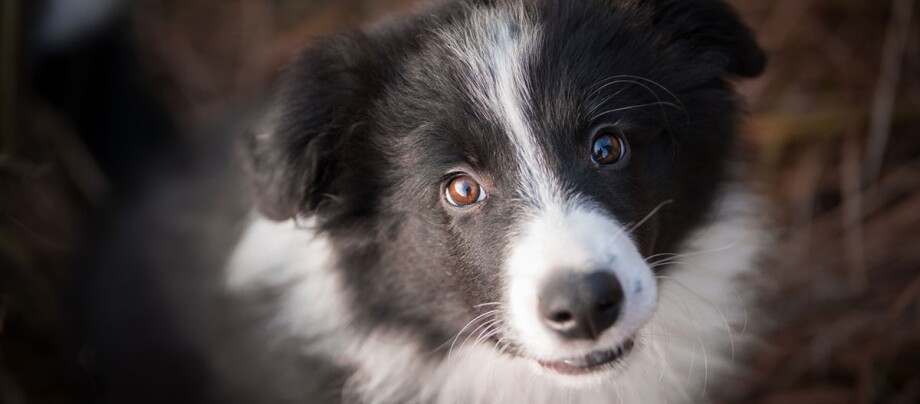Conjunctivitis in Dogs – Recognising, Treating and Preventing It
07.10.2022 - Reading time: 4 minutes

Conjunctivitis is one of the most common diseases in dogs. Some dog breeds even have a particular predisposition for this due to certain anatomical or genetic characteristics. However, most cases of conjunctivitis are unproblematic as long as they are treated promptly and efficiently. Find out more about preventive measures, how to recognise conjunctivitis and what to do if it occurs.
What causes conjunctivitis in dogs?
In the same way as with human eyes, eyelids protect a dog’s eyes. The inside of the eye socket is lined with a mucous membrane. This is called the conjunctiva. An inflammation of the conjunctiva is called conjunctivitis in veterinary terms.
The most common causes of an irritated and subsequently inflamed conjunctiva are foreign bodies in the eye. These could be allergy triggering substances such as pollen or dust, for example. But draughts can also irritate the eyes. Contagious conjunctivitis in dogs occurs as a result of viruses, bacteria, fungi or parasites.
In addition, special breeding characteristics increase the risk of inflammation of the eye – for example, the large bulging eyes of pugs, French bulldogs and boxers. The genetically predetermined palpebral fissure of these breeds can be too small or too large, too wide or too narrow. Hairy eyelid margins, such as those found in bloodhounds and cocker spaniels, are also frequently responsible for conjunctivitis.
What are the symptoms of conjunctivitis in dogs?
The most obvious signs of inflamed eyes are discharge, swelling and redness. The eye discharge can be clear and liquid, or mucus-like to purulent, yellow and sticky. In the case of viral infections, for example with the herpes virus, small blisters form which are extremely painful, stinging and itchy for dogs.
Symptoms of conjunctivitis in dogs include:
- The animal tries to rub its eye or scratch with its claws.
- The dog blinks frequently and squints its eyes.
- The eyes can water or produce another (purulent) discharge.
- The eyes can become red and sensitive to light.
How is conjunctivitis in dogs treated?
Treatment varies according to the diagnosed cause and extent of the conjunctivitis. In most cases, straightforward conjunctivitis caused by draughts or dust can be treated quickly and easily with special eye drops from the vet. Mild inflammations causing clear and non-purulent discharge can first be treated with eyebright complex.
If a dog develops long-lasting or even chronic conjunctivitis, a visit to the vet is strongly recommended, especially if the eye starts to ulcerate. The vet will first prescribe eye drops, eye ointments or eye gels, which usually contain an antibiotic agent. Bacteria are often present as a side effect in non-bacterial inflammations as well.
For inflammation caused by fungi or spores, treatment with antimycotics (antifungals) is recommended. In this case you should also seek the advice of a vet.
If your dog suffers from severe allergies and possibly other symptoms, it may be worthwhile to undergo allergen immunotherapy. This is a long-term therapy in which the dog is accustomed to the allergy causing substances in such a way that, in the best case scenario, no more symptoms occur over time.
In the worst case, surgical interventions may be required, especially where foreign bodies or parasites in the eye need to be removed. Ticks, for example, like to nest in the eye. In such cases, removing the parasite with common tools such as tick tweezers is difficult or impossible. If remnants of the tick remain in the eye, serious inflammations can occur.
Consequently, the duration of conjunctivitis in dogs can vary. It might be cured after a few days without complications, or it might take weeks, especially in the case of serious infections.
How do you prevent conjunctivitis in dogs?
You should avoid known triggers such as pollen or grass, particularly in dogs that are sensitive to allergens. A healthy diet and a strong immune system will reduce the likelihood of inflammation. Similarly, your dog’s basket or favourite corner should not be exposed to constant draughts or air conditioning.
Small breeds with their heads close to the ground often develop inflamed eyes. You can use mild special dog eye drops and eye washes, which you can get at your animal pharmacy or Maxi Zoo, as a preventive measure.
In the case of abnormalities of the eyelid associated with a specific breed, the only way to treat chronically inflamed eyes is surgery. You can find more information on dogs’ eyes in the Maxi Zoo Guide Eyecare for Dogs.


